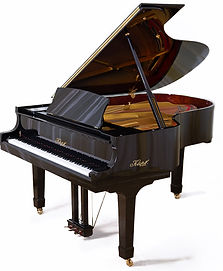
ErnstKaps Pianoforte ®

How do we build your piano?
Kaps Kiln drying process
Slow grown spruce is hand chosen for Kaps pianos. This perfect tonal wood finds its way into all of our hand built pianos, via our computer controlled kilns, where the wood is precisely treated and cured over a good deal of time to ensure longevity and rich warm sound. After the timber has arrived, it goes through further and extensive examination prior to being carefully cut and prepared into uniform sections depending upon where on the piano it’s destined to spend its life.
Woods selected.
High quality tonal woods are essential for successful piano making and solid spruce is still the favourite, and because this is the most valuable asset to the tone of a piano, today it remains unchanged in over 200 years!
Only close grained quarter sawn finest spruce, from older trees, growing at higher elevations, in colder climates, are used for our pianos. These dense woods, with consistent growth rings, are a result of the cold weather which allows the trees grow more slowly, so there are a greater number of annual rings in the same mass. This you can see as wood grain when the tree is cut. Tighter, straighter wood grain is the key factor, directly responsible for producing a much higher level of durability and resonance. This is what embodies a more powerful, rounded & colourful tone. At Kaps, this is what we believe has to be achieved in our endeavour for perfection.


Once under treatment, the wood is closely monitored while it undergoes periods of dehumidifying and re-humidifying until an accurately measurable absorption level is reached, this can take from days to weeks before the desired results are achieved and depending on the type and density of the wood in question, from the sound board, belly bars and bracing ‘spruce sections’, to the action ‘hornbeam’ or the incredibly strong hard ‘rock maple’ bridges, care and passion beyond expectation go into the preparation of your Kaps piano
This amazing process transforms the carefully selected wood, into its new form, ready to be reborn and formed into the heart of the piano as the soundboard, and the integrity of the piano, as the action, outer case and bracings.
.
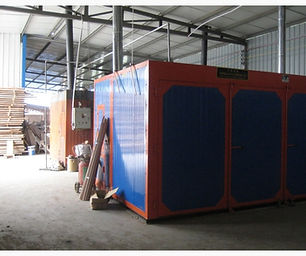
Dehonit ® who manufacture for industries ranging
from ship building to aircraft propeller blades, have
been producing Wrest Planks (pin blocks) and
other integral parts, for almost all of the top branded pianos,
since the 1950’s. These Include Steinway, Mason & Hamlin,
Estonia, Bosendofer, Petrof & many more. For us, this was the
natural choice for our pianos. Fashioned from high pressure
bonded red beech, especially for Kaps, boasts the highest
made of 21 laminates, guaranteeing your piano, unparalleled tuning-
stability & longevity...


The 'Wrest' plank/Tuning Pin block
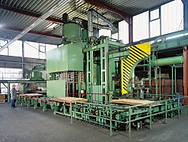

Wrest Pins/ Tuning Pins
Well known in the industry as ‘best choice’, and to complement the fact that we use some of the finest materials in the world, we fit your Kaps piano with ‘digital production controlled’ high tensile Nippon Denro ® ultra consistent tuning pins. After years of extensive testing and tuning we have not found any other to match these for being the strongest and most reliable tuning/wrest pin to date. As with all high quality pianos, these high strength, chromium protected pins, are hand seated and additionally supported by individually crafted, beechwood collars. We are immensely satisfied that this ensures an even and stable tuning, reducing the need for continued or repeated adjustment during and after the tuning process by your competent piano technician.

Strings
Roslau Stahldraht ® Germany, Nickel silver encapsulated piano wire is used for all the tenor and treble strings. We employ a specialist, bespoke production of a nickel silver encapsulation process
One of the best available internationally and used by the top piano producers Steinway, Bosendorfer, Mason & Hamlin and many others. To bolster the fact that we simply will not settle for second best, our Bass strings are also made at Mapes ® Tennesee.
It is this, that makes the acoustic wire, used on your piano, the only natural choice in the marriage between the passion & craftsmanship breathed into Kaps Pianos and what brings music truly to life because these strings are simply the finest known in the world!
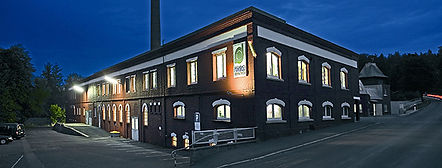

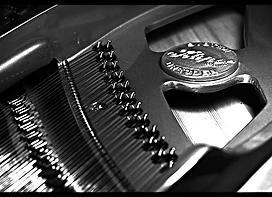

The heart of the Piano is 'Kaps all weald Action':
Traditional materials meet modern production engineering techniques.
How do we build a Kaps action?
Our design, which hasn’t changed in over half a century, maintains a process which strictly excludes the use of any man made or molded materials in its integrity. With over 8000 parts, the only real difference in our production methods today is that we employ precision digital technology to assist in maintaining reliable perfection and the consistency expected in the cutting and tension measuring processes, ensuring an even and responsive touch adding joy to your performance.
The all weald action rests over a key-bed and keys that are hand crafted from kiln cured and solid heart wood spruce, which are selected and quarter cut to ensure longevity and reliability. The valuable significance of these high quality, hand chosen materials and methods, allows for the very important and accurate adjustment required to guarantee smooth playing performance, and the unyielding stability to keep it that way. This also provides for ease of regulating by the technician for the future of the piano. The key chasings and key bushings are all traditional high quality imported European compressed pure wool bushing cloth, these surround polished forged steel centre rail pins and front rail bat pins. The capstans are of traditional solid brass and the springs are digitally tensioned to guarantee a consistently perfect touch and precise repetition designed especially to meet the rigorous demands of the competent performer.
‘Ernst Kaps’ high quality lightweight German, naturally cold pressed, laminate pure wool hammers formed over low density natural wool under-felt. Seasoned Hornbeam hammer heads and shanks. Pure wool stitched European Damper felt.
Each action is put through its paces with our auto play technology prior to passing several systems of strict quality control before being installed in to your piano.
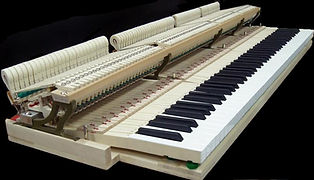
Renner action:
On our Kaps 210 XR performance grand piano and the 275RR concert series grand piano, the ‘Louis Renner action’ is installed, with German felt & hornbeam hammers and solid spruce keys. These actions are also installed in the following historical piano makers instruments:

Estonia
Mason & Hamlin
Baldwin
Bösendorfer
Steinway & Sons New York
Steinway & Sons Hamburg
Grotrian-Steinweg
Schimmel
Steingräber & Söhne
Bechstein
Blüthner
Fazioli
Feurich
Förster
Petrof

Final Finish
As much as your piano must sound & perform in every way that you should expect from a high performance instrument such as Kaps… We also believe it is every bit asimportant, not only to have unsurpassed performance & tone, but also to express the aesthetic presence that this measure of quality deserves.
We have taken every care to remain faithful to piano building tradition. This is why at Kaps all of our piano, solid timber outer rims and aesthetic features, enjoy hand crafted finishes that are both beautifully designed and opulent. High grade natural wood veneers and the finest deep shines are afforded by our natural, high build, multi layered resin process. With this, along with genuine solid brass accoutrements and aides, we are extremely proud to have created a look and feel that is designed to last for generations. We’re confident that you will be just as proud to own one.
